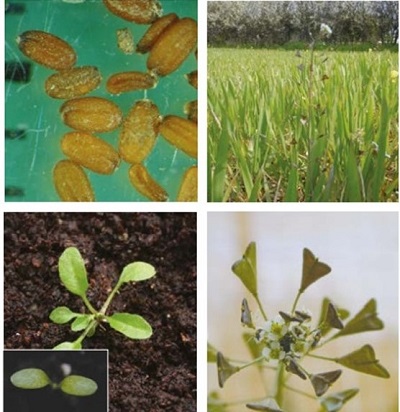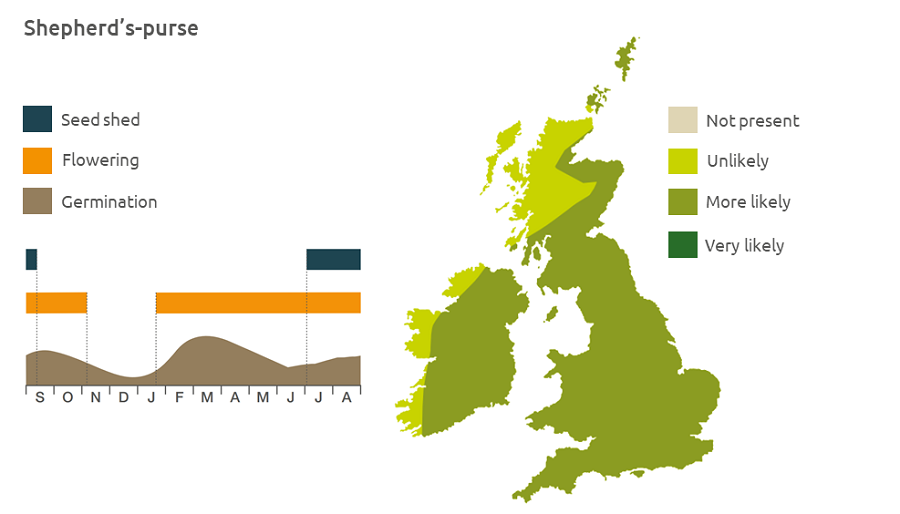- Home
- Knowledge library
- Distribution and biology of shepherd’s-purse in the UK
Distribution and biology of shepherd’s-purse in the UK
Shepherd’s purse is a widespread broad-leaved weed that can be a problem in oilseed rape and brassicas. Find out how to identify and control it.
Overview
Shepherd’s purse (Capsella bursa-pastoris) is widespread in crops in all seasons in the UK and throughout most of the world. It is more of a problem in oilseed rape or other brassica crops, so this weed should be controlled in the cereal crop. Germination can occur throughout the year and plants are able to overwinter. Plants have a short life span. The sticky-coated seeds may be transported on footwear or agricultural machinery.
Description
It is a variable annual or biennial dicotyledon, growing to 5–60 cm. Most of the leaves grow as a rosette at the base. The flowerhead is covered with small four petalled white flowers, developing into a characteristic heart-shaped seed head.
Key features
Young plant: The hairs on the young leaves are unbranched (a hand lens is required).
Lookalikes
As it is so variable, shepherd’s-purse can resemble several other species, particularly early stages of common poppy. Note the simple unbranched hairs of shepherd’s-purse.

Location and life cycle

Geographic distribution
Shepherd’s-purse is usually a lowland weed but may grow to an altitude of 400m. It is found on disturbed, especially fertile ground, with areas of bare soil and is usually associated with broad-leaved crops rather than cereal crops.
Soil type
It generally grows in nutrient-rich soils, with pH >5, such as humusrich loams and nitrate-rich sandy soils. Shepherd’s-purse avoids wet soils.
Seed statistics
- Seed longevity: >5 years
- Seed decline: 22–36% per year
- Germination depth: 0.5 cm
- Seed weight: 0.11 mg
- Seeds/flower: 30
- Seeds/plant: 2,000–40,000
Management
For advice on herbicides, please speak with your agronomist or adviser.
When was this information last updated?
This page is based on content from the encyclopaedia of arable weeds publication. Since it was first released in 2008, the publication has been redesigned several times but not revised. However, it remains a good foundation for general information on the distribution and biology of weeds.

